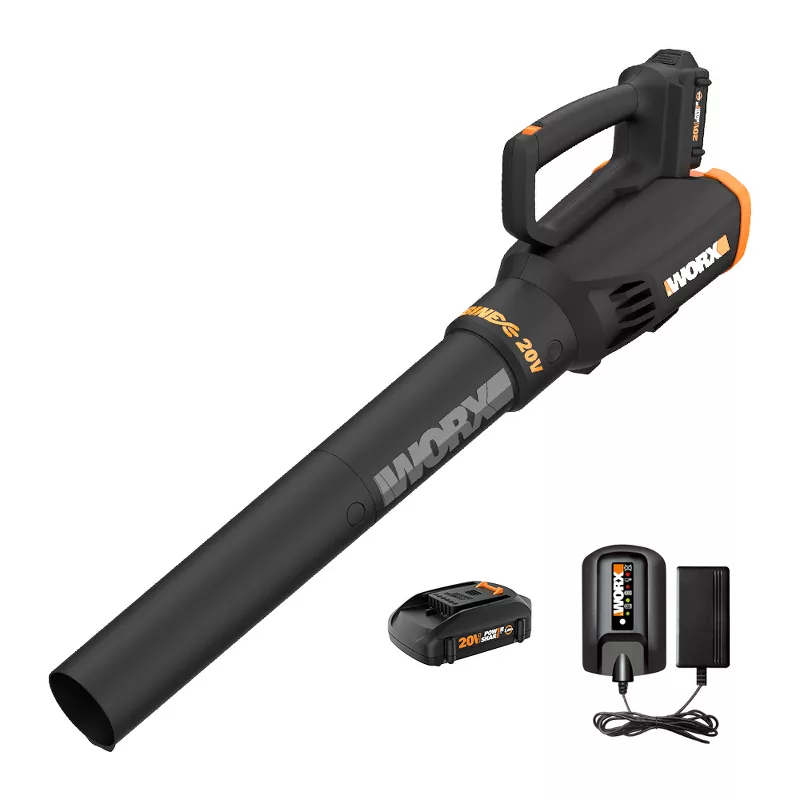13 costly outdoor cleaning mistakes to avoid – and what experts do instead for stress-free summer sanitizing
A little bit of know-how goes a long way

- 1. Skipping safety
- 2. Wrong tools
- 3. Overusing pressure washers
- 4.Hot weather cleaning
- 5. Skipping the rinse
- 6. Not drying decks
- 7. Using incorrect cleaning techniques
- 8. Neglecting the house exterior
- 9. Not using guards
- 10. Missing cracks
- 11. Forgetting to seal
- 12. Harsh chemicals
- 13. Neglecting regular tasks
- Meet the experts

As the warmer months beckon and our attention turns to sprucing up the exterior of our homes, it's easy to rush into outdoor cleaning tasks. However, if not approached correctly, what seems like a straightforward chore can turn into wasted effort, costly damage, or even personal injury.
Cleaning pros know that the key to effective and safe outdoor maintenance lies in preparation, the right tools, and proper technique.
We've compiled a list of 13 common outdoor sanitizing mistakes, along with tips on avoiding issues with your outdoor cleaning tasks so your home's exterior stays beautiful, well-maintained, and without any nasty surprises.
1. Skipping safety measures
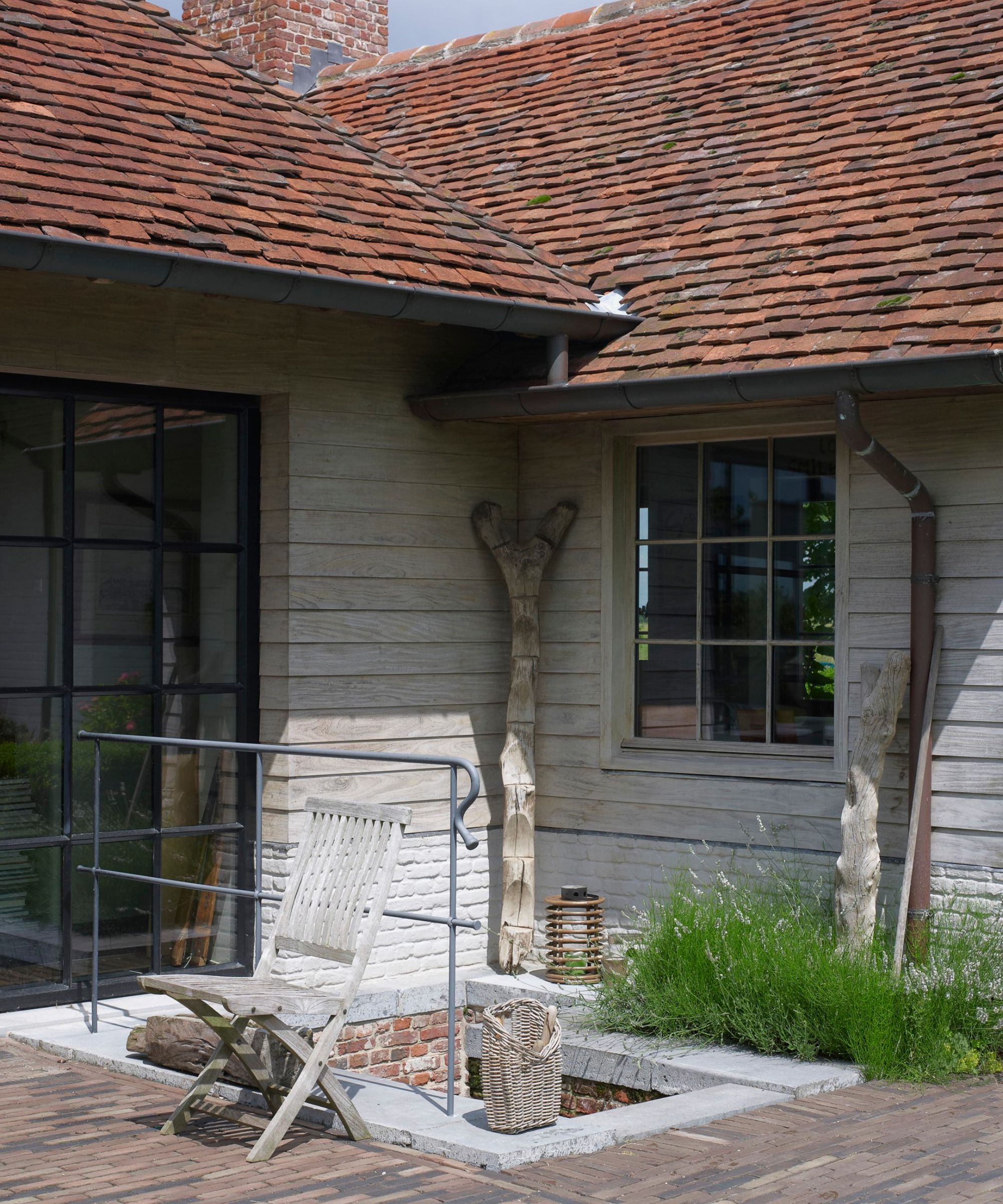
Inspecting the gutters is one of many tasks where it is vital to consider safety measures.
Many homeowners jump into outdoor cleaning without considering essential safety precautions, including wearing protective gear. This oversight can lead to accidents or exposure to harmful substances.
Karina Toner, operations manager at Spekless Cleaning, says, 'Some cleaning tasks seem less dangerous than they really are. Safety steps can often feel like an unnecessary hassle when you’re trying to get something done quickly. But skipping them can come at a high cost. Injuries from falls, chemical exposure, or tool mishandling are more common than you'd think.
'For example, when you're using common cleaning agents, it's easy to assume gloves or eye protection aren't really needed, but even mild solutions can irritate skin or eyes. And when cleaning high areas, I often see people just grab a ladder and get to work, without double-checking its placement or having someone nearby to help.
'Whether it's putting on a protective mask or stabilizing ladders, always build in a few extra minutes to prep safely. And before using any cleaner, actually read the full label & heed warnings and precautions. Most injuries are preventable, and taking small, consistent safety steps makes all the difference.'
Design expertise in your inbox – from inspiring decorating ideas and beautiful celebrity homes to practical gardening advice and shopping round-ups.
The RBLCXG Store Half Face Mask from Amazon offers great protection for a range of debris from summer tasks, including during the cleaning of your patio or weekend DIY projects. It also comes with a pair of safety glasses.
Toner also recommends the Orbit Telescoping Gutter Cleaning Wand from Amazon, adding, 'It has great reach and water pressure control, so you can clean safely from the ground, with no need for any wobbly ladders.'
2. Selecting the wrong tools

Selecting the wrong equipment can lead to damage or accidents.
With so many essential DIY tools out there, using tools that aren't suited for the specific cleaning task or surface is a common misstep, leading to ineffective cleaning or damage.
Toner says, 'With so many brushes, scrubbers, sprayers, and nozzles out there, it’s easy to assume that anything 'roughly close' will do the job. Sometimes it's a matter of convenience, grabbing what’s already on hand, and other times it’s just not knowing that a certain surface calls for a gentler touch.
However, using the wrong tools can leave scratches, cause unnecessary wear, or lead to a frustratingly ineffective clean that wastes both time and effort.
'Say someone uses a stiff wire brush to clean a composite deck. It might feel like it’s getting the grime off faster, but it’s actually damaging the protective layer and leaving behind grooves that trap even more dirt. Or using a pressure washer with the wrong nozzle on patio cushions – it can shred fabric or force water deep into the foam, leading to mildew.'
Instead, Toner advises matching your tools to the surface and task. She says, 'Opt for soft bristle brushes for cleaning outdoor furniture with delicate materials or wood siding, stiffer ones for concrete or stone. When in doubt, test a small area first before going all-in.
'And when it comes to powered tools or washers, always check the manufacturer’s guidelines for different surfaces and settings.' This will help you avoid a cleaning mistake you later regret, and have to spend money fixing.
Toner recommends OXO Good Grips Deep Clean Brush Set, available from Amazon, adding, 'It's great for getting into tight spaces like grout lines, sliding door tracks, and outdoor furniture seams without scratching. This set includes both a large and small brush with firm, angled bristles, perfect for many different outdoor areas.'
3. Overusing a pressure washer

Overusing a pressure washer can lead to a damaged driveway.
While powerful, a pressure washer is often misused, leading to significant damage on delicate surfaces like wood, vinyl siding, or even mortar joints.
Lina DaSilva, founder of Toronto Shine Cleaning, says, 'Overuse of a pressure washer often happens because people see it as a quick and powerful solution for any dirty surface.
'However, not everyone understands the different pressure settings, such as the types of nozzles or how different materials react to the intense force of the water. The wrong settings can easily remove paint, scratch wood, erode concrete, break window seals or force water behind siding, leading to mold and rot.
'One very common scenario is using a pressure washer on a wooden deck or fence at too high a pressure. People think they're getting the wood super clean, but actually the intense jet of water is tearing the wood fibers. This can leave 'zebra stripes' or make the surface of the wood fuzzy and splintery. Even if it looks clean at first, the moisture can accelerate the growth of rot and mold from within!'
There are other ways to clean a deck without a pressure washer, and many things you should never clean with a pressure washer.
If you're at all unsure, DaSliva suggests beginning with the lowest pressure possible, and using the Tool Daily Foam Cannon from Amazon. She adds, 'This fits onto the pressure washer and allows you to apply a good layer of detergent over the surface. This action does a very good job of loosening dirt and grime, which means you can rinse with much less pressure.'
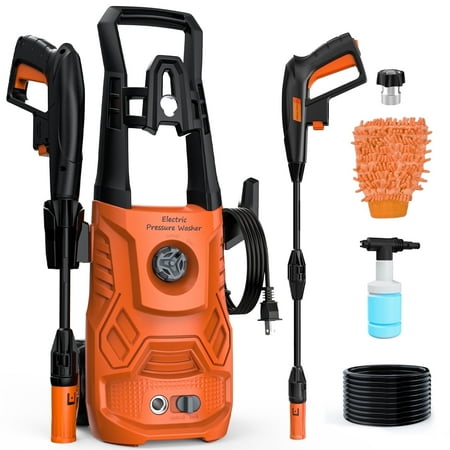
With a water flow rate of up to to 2.6 GPM and a 23-foot extension hose, this 4200PSI pressure washer can remove a wide variety of stains. Always consider pressure settings carefully. It's a great price not often beaten.
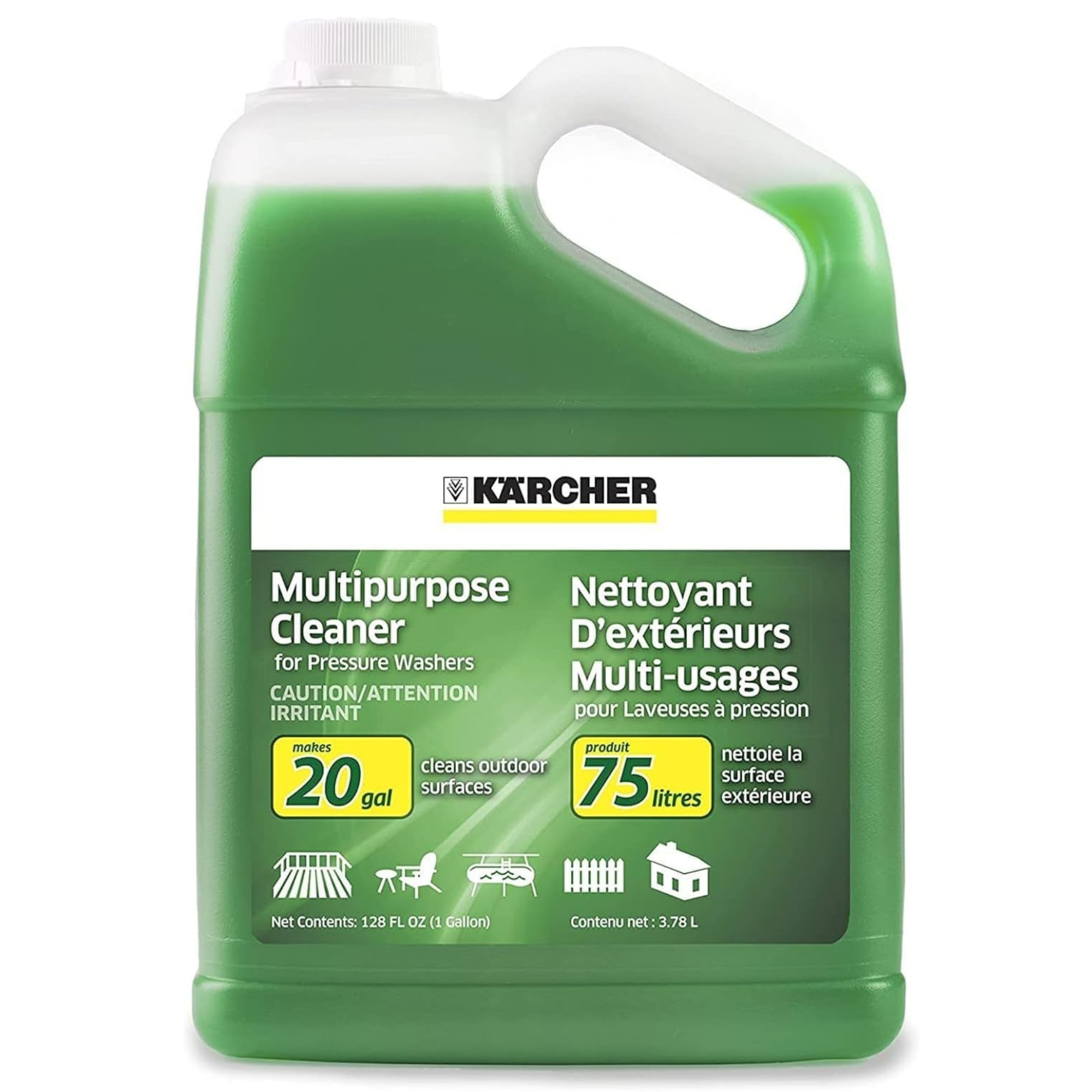
This multipurpose cleaner is designed to work with any pressure washer, with a highly formulated formula for cleaning concrete, pavements, driveways, patio pavers, and more.
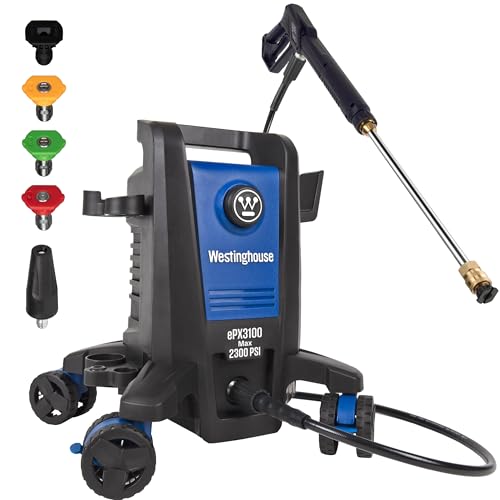
This highly-rated pressure washer is compact and lightweight for easy storage and portability, and features an anti-tipping design. Remember to carefully consider your settings before you begin.
4. Cleaning in direct sunlight

Cleaning in direct sunlight can lead to imperfect results.
Attempting to clean surfaces in direct, hot sunlight is a frequent mistake that can leave unsightly streaks and residue. People with clean windows always avoid the sun.
Toner says, 'It’s easy to assume that a bright, sunny day is the best time to tackle outdoor cleaning. The weather’s nice, there’s good visibility, and things seem like they’ll dry faster.
But sometimes, that’s exactly the problem: some cleaning solutions start evaporating before they’ve had time to work. This can lead to residue buildup, uneven finishes, or even permanent marks. It's best to steer clear if you want to clean windows without streaks, for example.
'One of the most common cases is on exterior windows. On a hot, sunny day, you’re more likely to end up with streaks and water spots than sparkling glass. The cleaner dries too fast, leaving behind a cloudy film, no matter how well you wipe.
'Instead, plan your cleaning window (pun intended!) ahead of time. Aim for early morning, late afternoon, or even slightly overcast days for anything that needs time to soak, dwell, or rinse clean, like windows, patio siding, or painted surfaces. Timing is everything.'
Toner recommends Invisible Glass Premium Glass Cleaner from Amazon, adding, 'It's streak-free even in trickier conditions, but works best when applied in cooler times of day.'
5. Forgetting to rinse surfaces
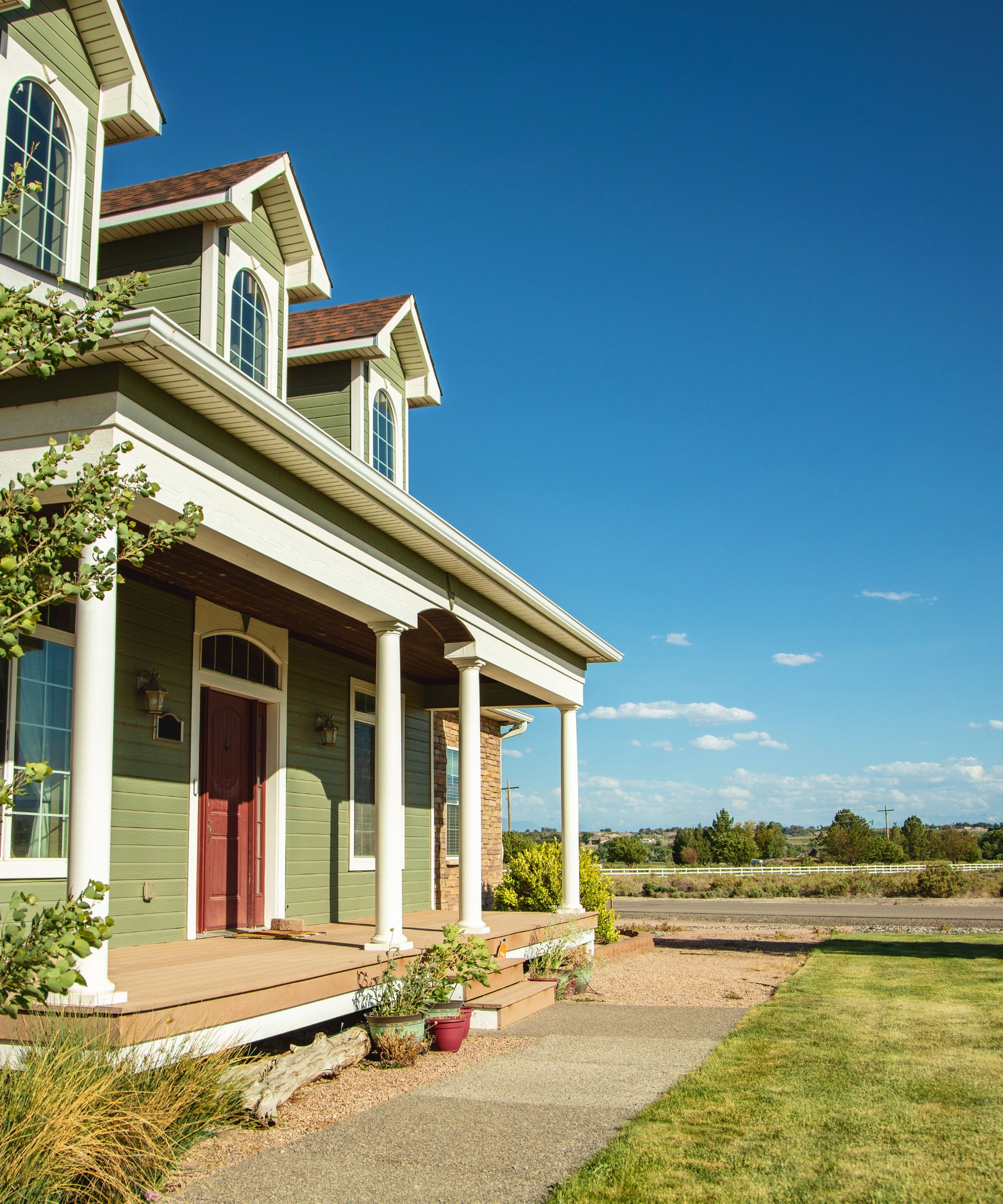
Forgetting to rinse surfaces is a common outdoor cleaning mistake to avoid.
A common oversight is failing to thoroughly rinse off cleaning solutions, leaving behind chemical residues that can attract dirt, damage surfaces over time, or create slippery spots.
Wells Ye, founder of Fresh Tech Maid, says, 'In the satisfaction of seeing dirt disappear, many people forget that cleaning solutions need to be completely removed. Leftover products can leave residues that attract dirt faster than before.
'A soapy patio is a good example – it turns sticky and slippery if not rinsed, posing safety risks. Instead, you want to rinse thoroughly using a hose or pressure washer with a wide-angle.'
Ye recommends the Greenworks 1500 PSI Electric Pressure Washer, available from Walmart, adding, 'It's lightweight and highly efficient for rinse cycles.'
Rinsing properly will stand you in good stead when the cooler months arrive, and you're left tackling moss on your patio.
6. Forgetting to dry your deck
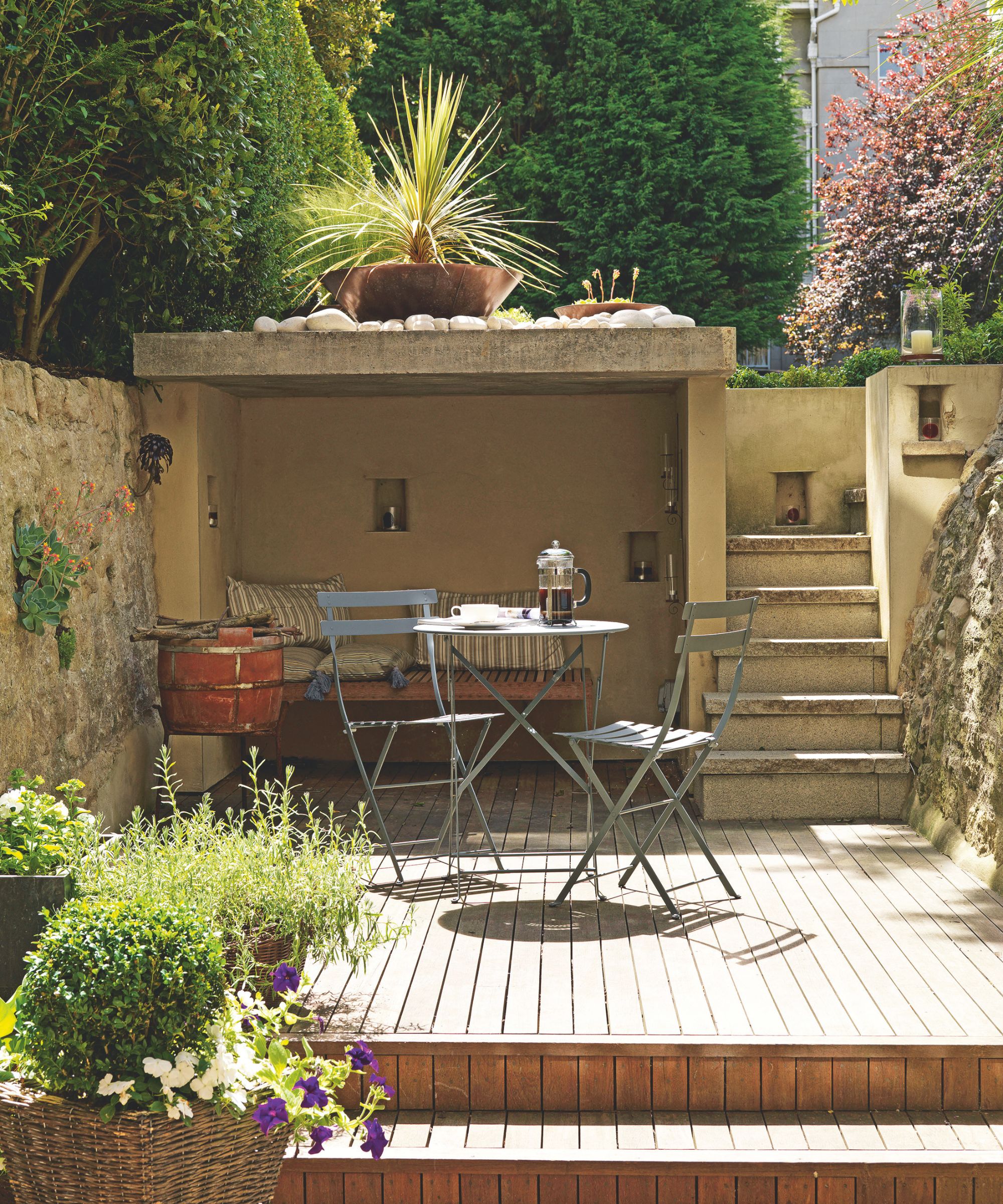
Forgetting to dry decking is a common oversight.
After cleaning a wooden deck, many homeowners neglect the important step of allowing it to properly dry before applying sealants or bringing your furniture back. Trapped moisture can lead to mold, mildew, and warping.
Ye says, 'After the satisfaction of cleaning, many people simply pack up their equipment and leave wet surfaces to air dry. However, standing water on decking can lead to water spots, streaking, and can reverse some of your cleaning efforts by allowing dirt and debris to resettle on the wet surface. A damp deck may grow slippery moss within days, posing a slip hazard.'
Instead, Ye recommends using towels or a leaf blower to ensure surfaces are fully dry. The Leisch Cordless Leaf Blower from Amazon is one of the most affordable on the market and has a rechargeable battery. Lightweight and with adjustable speeds, the Greenworks 40V Leaf Blower from Amazon is also a popular option to make your driveway look more inviting.
Our look at the many surprising but useful uses for a leaf blower has more tips and tricks to making use of this essential tool year-round.
7. Using incorrect cleaning techniques

Incorrect cleaning mistakes can ruin a patio.
Improper techniques, such as scrubbing in circles on wood grain or cleaning sections inconsistently, can lead to uneven results, streaking, or even permanent marks. Methodical application is key for a professional finish.
Cleaning expert Jessica Gonzalez, chief operating officer at Sparkly Maid San Antonio, says, 'Using the wrong scrub brush or applying too much force can ruin outside surfaces. I've seen people destroy painted patio sets or scratch stone trying to scrape the dirt off, when all it needed was the proper product and some patience.
'My simple rule is this: let the cleaner sit, loosen the grime, and get the lion's share of the work done before scrubbing.'
Gonzalez recommends Krud Kutter Exterior Cleaner from Walmart, adding, 'It's tough on grime, but a cinch to rinse out without too much elbow grease.'
8. Neglecting the house exterior

Neglecting the house exterior can lead to problems including damp or pest infestations.
Many homeowners focus solely on patios or driveways, neglecting the house exterior itself, which accumulates dirt, mildew, and pollutants. Over time, this buildup can degrade siding materials and diminish curb appeal.
Gonzalez says, 'The outside of the home typically falls by the wayside, particularly around door frames, window sills, siding, and even porch lights. We commonly notice heavy dust and cobwebs that individuals no longer notice over time.
'A simple monthly washing with a hose and a soft-bristled brush can avoid accumulation. You don't have to spend money on advanced tools, just something soft and long-handled to access those higher zones and maintain things.'
With a 6-ft reach, the Swiffer Dusters Heavy Duty Super Extendable Handle Dusting Kit from Target is ideal for getting to those hard-to-reach spots on the outside of your home.
You can also prevent faucets freezing and avoid potential pipe bursts during cold snaps by installing faucet covers and wrapping exposed pipes. Toner adds, 'This Frost King Outdoor Faucet Cover from Amazon is great. It comes in a four-pack, is easy to install, and it protects faucets from freezing temperatures.'
9. Not using guards

Not using guards can prove a problem when trimming trees or hedges.
When trimming hedges or using string trimmers near structures, forgetting to use appropriate guards can lead to accidental damage to siding, fences, or garden features. Overspray from pressure washers can also prove an issue.
Ye says, 'Many people don't realize that surrounding landscaping, windows, and adjacent surfaces need protection during cleaning. Overspray from cleaning solutions and pressure washers can damage plants, etch glass, or stain nearby surfaces, for example, creating additional problems that are often more expensive to fix than the original cleaning project.
'Instead, use guards or shields around nozzles and keep nearby items covered. The Sun Joe SPX-TLTB Turbo Lance with Splash Guard Brush from Amazon perfectly controls the spray pattern and prevents overspray.'
10. Not checking for cracks

Checking for cracks is important to maintain the quality of any patio.
While cleaning your patio is among the top outdoor cleaning tasks to do right now, failing to inspect for cracks or damage first is a significant mistake. Cleaning can worsen these issues, or sealing over them can trap moisture and accelerate decay.
Axel Avery, professional cleaner at Oakville Maids, says, 'Not checking for cracks is a really common mistake – both around the house exterior, and on patios. Most decks and sidings are made from wood, so if you clean them with your pressure washer, water will seep through any cracks and make things worse.'
Avery recommends Bondo Wood Filler from Amazon, adding, 'This wood filler works quickly and – after sanding and painting – will create a sturdy barrier against water and mold. Fill the cracks using a putty knife, wait 30 minutes, sand down the excess, prime and paint. Finally, let it sit overnight before cleaning.'
Inspecting and sealing gaps around your home prevents drafts and leaks. It's also vital for preventing mice from getting in, as well as other common indoor pests.
Start by sealing any cracks around doors, windows, vents, and the foundation. Combine Gorilla Waterproof Caulk & Seal Silicone Sealant from Walmart with the Red Devil Extreme Duty Caulk Gun, available from Amazon, which has an ergonomic rubber trigger.
11. Overlooking sealing maintenance

Sealing patios and driveways can ensure longevity.
Neglecting to re-seal outdoor surfaces such as concrete, pavers, or wood decks allows moisture, dirt, and UV rays to penetrate, leading to faster deterioration, staining, and costly repairs down the line.
Ye says, 'Many people focus solely on the cleaning aspect without considering the protective treatments that keep surfaces looking good longer. Failing to maintain sealers and protective coatings means that future cleaning will be more difficult and surfaces will be more susceptible to permanent damage.'
Instead, apply a quality sealant after drying, especially for decks and pavers. Ye recommends Thompson’s WaterSeal Wood Protector from Amazon, adding, 'This is a reliable product that prevents water and sun damage on wood.'
For driveways, MasonryDefender Store's Concrete Sealer from Amazon protects against pitting and cracking, while for asphalt, Black Jack Drive-Maxx Sealer from Walmart is a reliable option.
12. Using harsh chemicals

Using harsh chemicals is a common outdoor cleaning mistake.
Opting for overly strong or abrasive chemicals, such as undiluted bleach or industrial-strength degreasers, without understanding their impact can severely damage plants, discolor surfaces, or pose health risks.
Gonzalez says, 'Strong cleaners are dangerous for surfaces and will kill plants with no notice. I've even visited a home where someone applied full-strength bleach to his patio and ended up with burned grass, stained rock, and an odor that persisted for days.'
Gonzalez advises avoiding bleach, opting instead for milder, effective cleaners, and following dilution instructions carefully. Always test products on an inconspicuous area first.
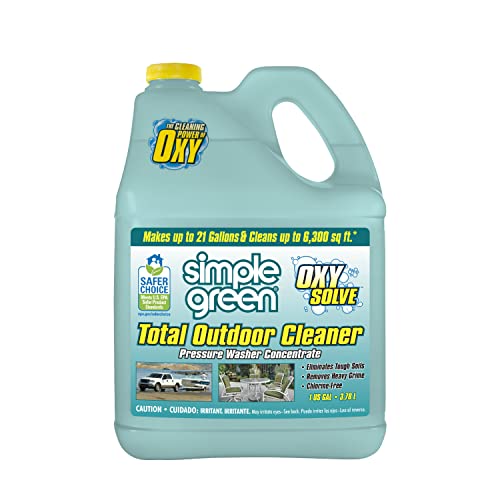
Our industry experts love this trusty outdoor cleaning solution. Sparkly Maid San Antonio's Jessica Gonzalez says, 'It's kinder to your garden than most alternatives, getting the job done on siding, decks, and patio furniture without risk.'
13. Neglecting regular maintenance

Neglecting regular maintenance is an important outdoor cleaning mistake to avoid.
The biggest mistake is often simply neglecting regular outdoor cleaning and the tasks on your outdoor maintenance calendar. Allowing dirt, mildew, and debris to build up over time makes subsequent cleaning much harder and can lead to permanent staining or damage.
Toner says, 'Most outdoor cleaning is reactive – we often notice dirt, mildew, or buildup after it’s a problem, and then scramble to fix it. Regular maintenance feels optional, or like something you’ll just “get to next time”. But without it, grime sets in deeper, damage goes unnoticed, and you’re left with bigger, more expensive clean-up jobs later on.
'Take outdoor furniture, for example: if cushions aren’t brushed off and stored properly between uses or seasons, they start to grow mildew or fade from sun exposure.
'Or cleaning concrete floors outside: Ignoring routine sweeping and rinsing lets organic debris break down into stains that become stubborn over time. These surfaces then need more aggressive treatment later, which can wear them down faster.'
Instead, change up your cleaning approach by creating an achievable cleaning routine that includes the outdoors.
Alternatively, Avery recommends this Editable Cleaning Schedule from Etsy, adding, 'Don't wait for the perfect time to do these tasks, as it won't arrive. This schedule is great if you're a visual person – just print it out and pop it on your fridge door.
'You can choose between one that’s already full or an empty one to customize. Place outdoor cleaning tasks under the monthly or quarterly sections.'
Meet the experts

With extensive contributions in Homes & Gardens, Real Homes, The Spruce, and many more, professional cleaner Karina has extensive knowledge of both commercial and residential cleaning.

Lina is the founder of the award-winning Toronto Shine Cleaning. With over five years of industry experience, she specializes in residential cleaning and home organization.

Wells is founder of cleaning company, Fresh Tech Maid, which has been sprucing American homes for 25 years. The company's trusted technicians complete a rigorous 10-step evaluation process to ensure exemplary service.

As the chief operating officer at Sparkly Maid San Antonio – serving the Texan area since 2014 – cleaning expert Jessica leads daily operations with a focus on eco-friendly practices, and exceptional home cleaning quality.

With more than a decade of industry experience under his belt, it's perhaps no surprise that Axel is known locally in the trade as 'Mr Clean', ensuring family-owned Oakville Maids delivers top-notch service every time.
So there you have it – 13 outdoor cleaning mistakes, and what to do instead. By being mindful of these common mistakes and incorporating our expert advice into your routine, you can more easily maintain the long-term beauty and health of your home.
Next, explore new front yard paving ideas.

With more than a decade of experience writing news, lifestyle, consumer, and human interest articles for a wide range of national and international publications, Andy is a highly-qualified journalist writing features for the national press. From front porch to backyard, attic to basement, Andy has written about every area of the home. He specialises in bringing together the best industry expertise to answer all of your most pressing home and garden questions about seasonal and everyday cleaning, decluttering, organizing and DIY.
You must confirm your public display name before commenting
Please logout and then login again, you will then be prompted to enter your display name.
